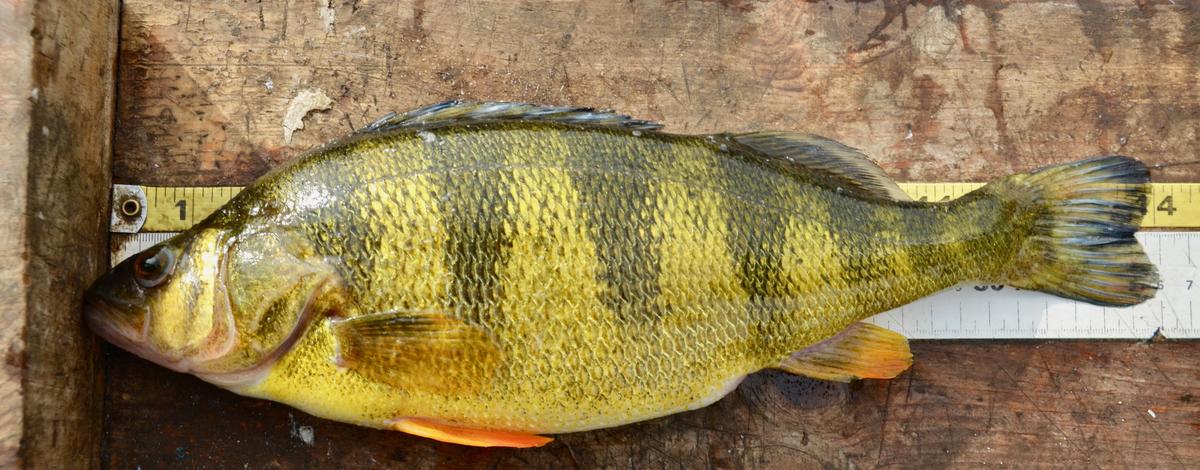Since 2012, Fish and Game’s McCall fisheries staff has conducted annual fall surveys on Lake Cascade by using gillnets and recording the species and sizes captured in the nets.
Overall, perch numbers are similar to 2017 numbers, but down from annual surveys since 2012 (see below). Also perch greater than 10 inches dominate the population, and have since 2014-15.
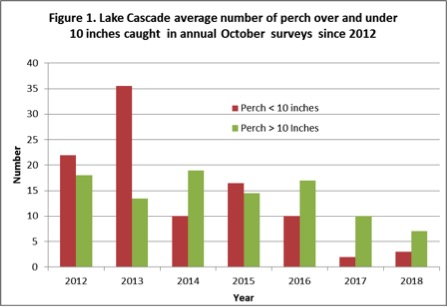
This information is used by McCall’s fishery staff to manage game fish in the reservoir. In particular, biologists monitor yellow perch and northern pikeminnow populations. Perch are the most popular fish for anglers in the lake, and pikeminnow predation is the single biggest threat to the perch population. Biologists also monitor smallmouth bass, rainbow trout and kokanee numbers.
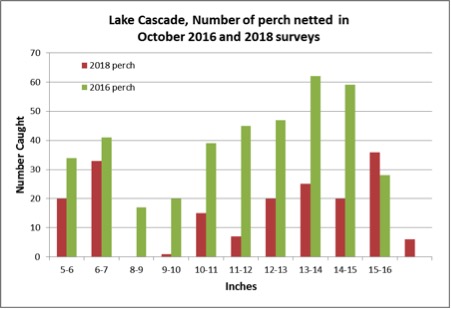
Change is normal
Changes in the perch population since 2012 were expected because perch populations are cyclical by nature.
Over the past five years, anglers have enjoyed fishing on a very large group of large perch, commonly known as jumbos, which were produced shortly after perch fishery restoration work was completed in 2006. In Lake Cascade, the main food source for perch is smaller perch. From 2006 thru 2012, there was a new, and relatively small, perch population with fewer large perch to eat the smaller perch.
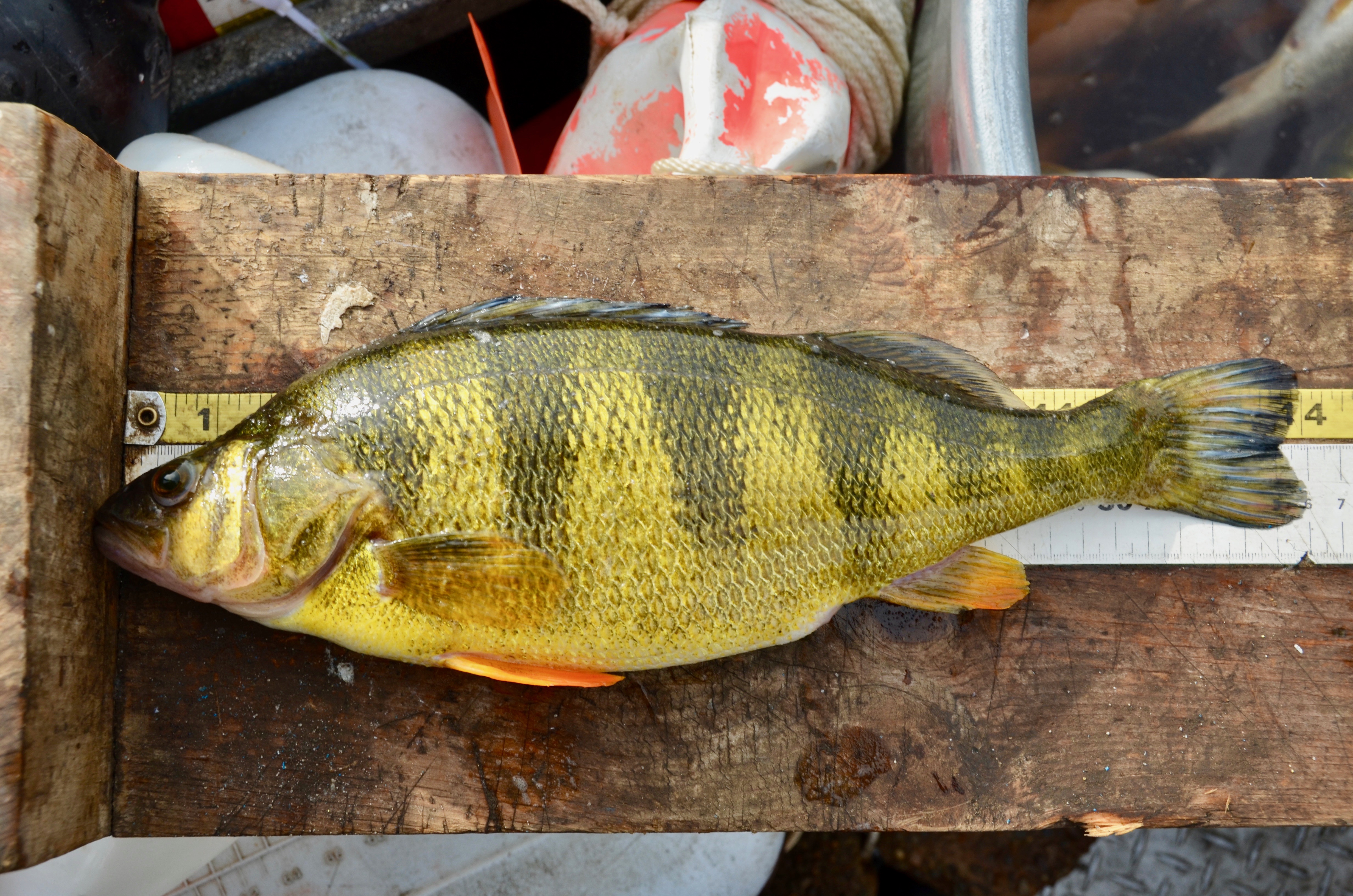
That enabled a large portion of those smaller fish to survive and grow relatively unchecked into the amazing perch fishery that in recent years produced numerous trophy-sized fish, including two world records and several state records. Highlights for 2018 included the new Idaho state catch-and-release record, and the North American Freshwater Fishing Hall of Fame’s all tackle, catch-and-release world record, which was a 17-inch perch caught in May by David Ekmark.
The large number of big perch anglers enjoyed the last few years has had a huge impact on young perch survival. As you can see in the chart above, the numbers of 7 to 10 inch fish has declined over the last couple years. This is a direct result of predation on small perch.
Because there are fewer 7 to 10 inch perch to replace the big perch being harvested and dying of old age, the number of perch larger than 10 inches will decline over the next few years. But as the number of big perch declines from old age and angler harvest, predation on small perch is also reduced, which allows more smaller perch to become the next generation of jumbos.
Small perch up to 8 inches are also the primary food for pikeminnow, and predation by pickminnows is the primary threat to the perch fishery in Lake Cascade, so biologists and staff have continued pikeminnow removal each spring since 2012.
Biologists have also monitored the harvest rates of perch over 10 inches with tagging studies to evaluate if harvest restrictions are needed to protect those larger fish. The tagged fish anglers catch and report is valuable information to determine if harvest rates are too much to maintain large perch numbers. Results of those studies indicated most perch greater than 10 inches actually die of old age, or other natural causes, rather than being caught by anglers.
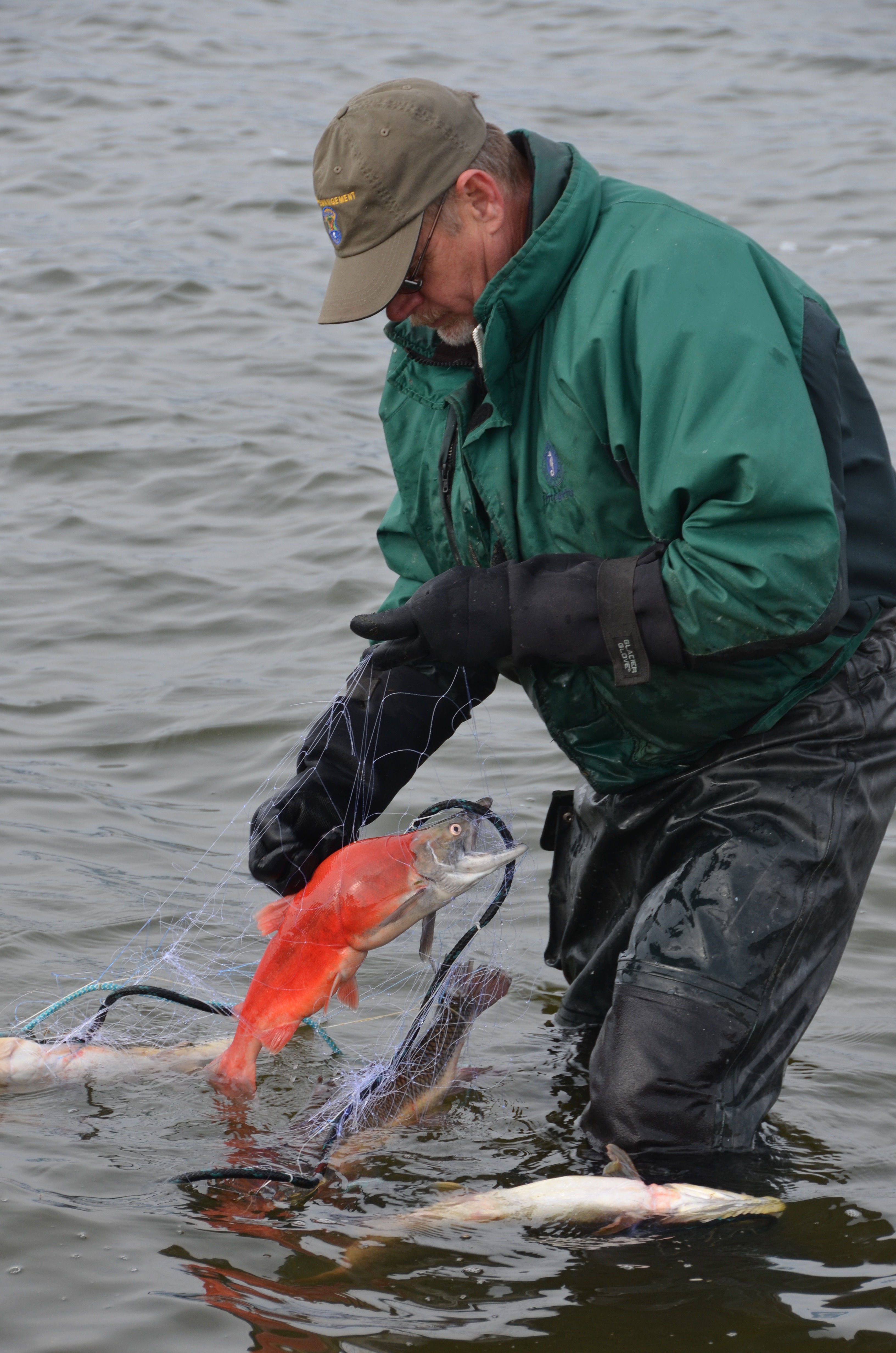
No walleye is good news
The first and only documented walleye was caught by an angler in Lake Cascade in May of this year. Fish and Game is highly concerned about the illegal introduction of walleye in the lake because predation by pikeminnow caused the perch population to collapse in the 2000s, and illegal walleye stocking could add another predator that could potentially wipe out the perch fishery. Biologists did not collect any walleye during the fall survey.
Rainbows trout, smallmouth and kokanee population remain healthy
Cascade’s rainbow trout and kokanee fisheries are a direct result of annual stockings, and smallmouth bass are a self-sustaining population that Fish and Game monitors.
Surveys showed good numbers of rainbow trout in the fall, ranging from 12 to 25 inches, with most in the 10 to 16 inch range. Fish and Game recently switched to stocking 12-inch rainbows, which resulted in better survival. The fishing outlook is excellent for rainbow trout in 2019.
Surveys also showed kokanee at nearly every netting site in 2018. Most were in the 12-15 inch range.
Netting also collected a large number of 10 to 18 inch smallmouth bass, with half of those larger than 14 inches, and the largest at nearly 20 inches.
In summary, annual fish surveys are vital to managing Lake Cascade and its world-class perch fishery. While Fish and Game expects a decline in the numbers of jumbo perch over the next few years, biologists don’t expect them to vanish entirely, and they expect a strong rebound in the following years as long as pikeminnow numbers are held in check and illegal walleye introductions stop and fail to establish a population.
If anyone catches a walleye in Lake Cascade please report it with a picture to the McCall office at (208) 634-8137, or the Nampa office at (208) 465-8465.
Watch this video to learn more about ice fishing for perch on Lake Cascade.

